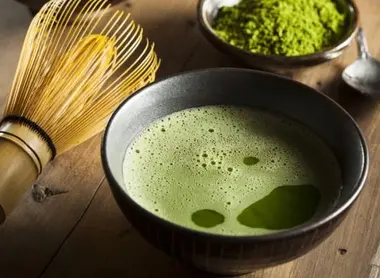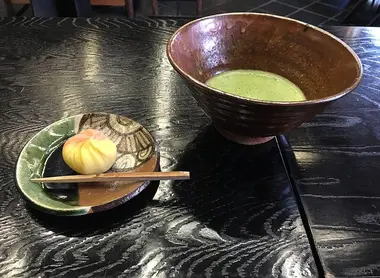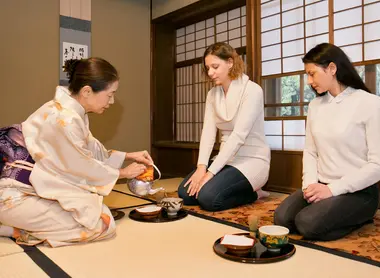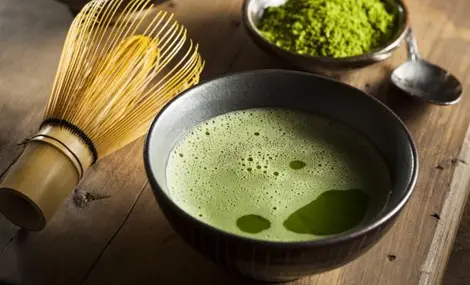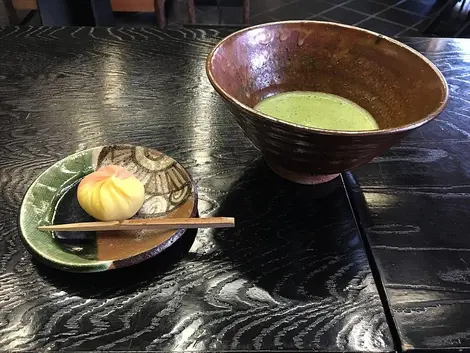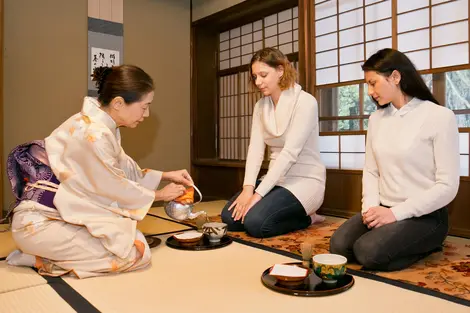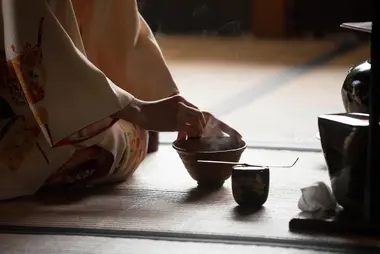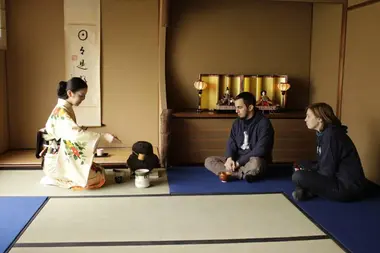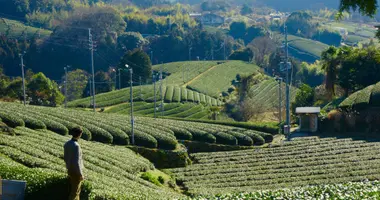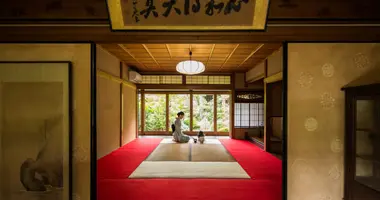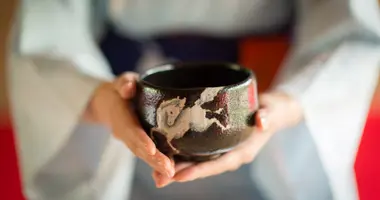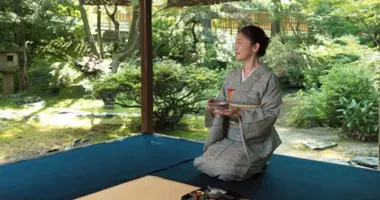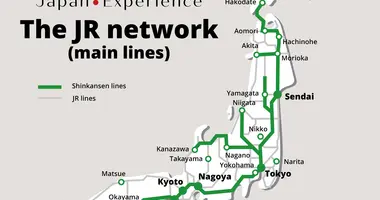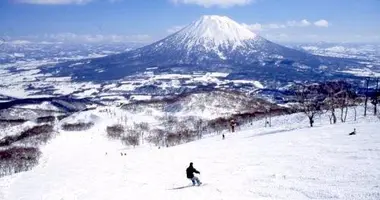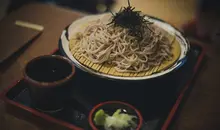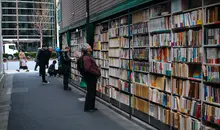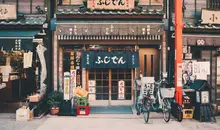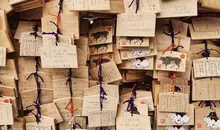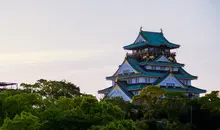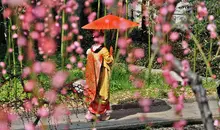Attend a tea ceremony in Japan
- Published on : 19/05/2020
- by : J.R.
- Youtube
Where to attend a tea ceremony in Japan?
The Japanese tea ceremony, or chanoyu, is much more than simply tasting tea. It's a thousand-year-old traditional art deeply rooted in Japanese culture. This unique experience offers an insight into the aesthetic and spiritual values of Japan through a codified ritual of preparing and serving matcha tea. During this ceremony, each gesture is meticulously executed according to age-old traditions. For travelers wishing to discover this essential facet of Japanese culture, there are numerous possibilities in both Tokyo and Kyoto, the true cradles of this refined art.
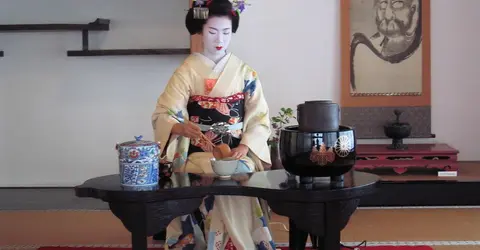
Maiko making tea
Wikimedia Commons
The origins and philosophy of the Japanese tea ceremony
Although it originated in China, the tea ceremony has truly developed in Japan to become an essential cultural symbol. Introduced in the 9th century by Buddhist monks, the practice was initially used for medicinal purposes before gaining popularity among the Japanese elite. In the 16th century, the famous tea master Sen no Rikyū codified the practice, establishing the four fundamental principles that still govern it today: harmony (和, wa), respect (敬, kei), purity (清, sei) and tranquility (寂, jaku).
The Japanese concept ofomotenashi, reflecting a profound sense of hospitality, is perfectly illustrated by the tea ceremony. It also embodies the philosophy of wabi-sabi, which celebrates the beauty of imperfection and transience. The idea that each encounter is unique and can never be reproduced identically is expressed by the adage "ichi-go ichi-e" (一期一会, literally "once, an encounter"), underlining the importance of cherishing each shared moment.
Today, several schools perpetuate this tradition, including the three main ones: Omotesenke, Urasenkeand Mushanokojisenke, each with their own nuances in the way tea is served. Despite these differences, they all respect the very essence of this art form, which transcends simple tasting to become a spiritual and aesthetic experience.
The traditional course of a tea ceremony
A complete tea ceremony, known as a chaji, can last several hours and comprises a number of rigorously orchestrated stages. The more informal chakai, on the other hand, focuses mainly on the serving of tea and generally lasts less time. For tourists, abbreviated but authentic versions are offered in many establishments.
The experience begins even before entering the tea room. Guests symbolically purify themselves by washing their hands and rinsing their mouths with clear water in a tsukubai (stone basin). They then enter the chashitsu (tea pavilion) through a small door that requires them to bow, a reminder of the humility required for this practice. Inside, they take their places on tatami mats in a precise order, with the guest of honor(shokyaku) placed closest to the decorative alcove(tokonoma).
The tea master begins by greeting his guests, then methodically places the various utensils around him. He then proceeds to the ritual cleaning of each object with a fukusa (silk square) before preparing the tea. The hot water is poured into the bowl with a bamboo ladle(hishaku), then the master adds the matcha powder, which he stirs vigorously with a bamboo whisk(chasen) until a creamy texture with a frothy surface is obtained.
Each guest is served individually. Before tasting the tea, the guest greets his neighbor, then raises his bowl as a sign of respect for the host. He then turns the bowl twice clockwise to avoid drinking from the front side, considered the most beautiful part of the bowl. Matcha is traditionally sipped in two and a half mouthfuls, after which the guest gently wipes the rim of the bowl and rests it face down. This sequence is repeated for each participant, creating a moment of sharing and communion.
Utensils and ritual essentials
The tea ceremony calls for a set of specific utensils, each with a particular function and symbolism. These objects are handled with extreme care and according to precise gestures that testify to the respect accorded to this ritual.
The chawan (茶碗) is the tea bowl in which guests enjoy matcha. There are a wide variety of styles, adapted to the seasons: shallow, thin-walled bowls for summer to cool the tea quickly, and deeper, thick-walled bowls to retain heat in winter. Some bowls, centuries old, are considered real treasures. Imperfections and irregularities are particularly appreciated, in keeping with the aesthetics of wabi-sabi.
The chasen (茶筅), a bamboo whisk, is used to mix tea powder and water to obtain the texture so characteristic of matcha. Carved from a single piece of bamboo, it generally has between 80 and 120 fine strands to perfectly emulsify the tea. The chashaku (茶杓), also made of bamboo, is used to precisely measure out the amount of matcha powder required.
To preserve the tea, either a natsume (棗) is used for light tea (usucha), or a cha-ire (茶入) for thick tea (koicha). These tea caddies are often works of art in themselves, made from lacquered wood, ceramic or sometimes bamboo. Other items complete this arsenal: the kama (釜), a cast-iron kettle for heating water, the mizusashi (水指), a container for cold water, and the futaoki (蓋置), a lid rest.
These utensils are not only functional tools, but also works of art that reflect the importance attached to aesthetics in Japanese culture. Each of them contributes to creating a complete sensory experience, where sight, touch and taste harmonize to form a moment of grace and serenity.
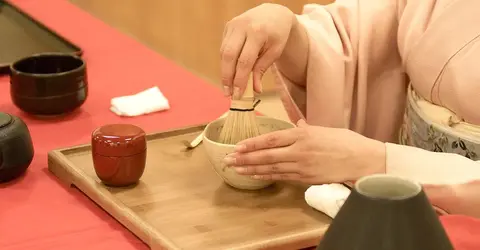
Tea is whipped during the ceremony
Wikimedia Commons
How to behave and dress for a tea ceremony
Participating in a Japanese tea ceremony requires certain rules of etiquette to honor this traditional art. If you've been invited to attend, a few simple principles will help you enjoy the experience with complete peace of mind.
When it comes to attire, you'll want to keep it simple and understated, reflecting the spirit of simplicity that characterizes the ceremony. Neutral colors are recommended, and avoid garish or casual outfits. If you're wearing Western clothes, opt for formal yet comfortable attire, as you'll be sitting on tatami mats in the seiza (kneeling) position for some time. For women, long skirts or pants are preferable. Clean socks, ideally white, are essential, as you'll need to remove your shoes before entering the tea room.
Some establishments offer kimono rentals for a more authentic experience. In this case, choose a sober-colored model, as flamboyant patterns are not appropriate for this type of event. Bulky accessories and jewelry should be avoided, as they could damage the precious utensils or simply be uncomfortable during the ceremony.
As for behavior, discretion and respect are essential. Pay close attention to the gestures of your host and other participants. When you receive your bowl of tea, bow slightly in gratitude. Don't hesitate to politely compliment the beauty of the bowl or utensils, which will be appreciated by your host. Avoid sudden gestures and keep your voice low. If you are unable to maintain the seiza position for the duration of the ceremony, it is acceptable to sit cross-legged or discreetly change position to relieve the strain on your legs.
Finally, take time toappreciate every moment of the ceremony, soaking up its unique atmosphere. This is a rare opportunity to experience a centuries-old tradition that connects you directly to the essence of Japanese culture.
Where to take part in a tea ceremony in Tokyo
Despite its image as an ultra-modern metropolis, Tokyo offers many opportunities to discover the traditional art of the tea ceremony. Here are a few must-visit addresses for this experience in the Japanese capital.
The Imperial Hotel Toko-an is undoubtedly one of Tokyo's most prestigious addresses for an authentic tea ceremony. Located in the Chiyoda district, this famous hotel houses a traditional tea pavilion where experienced masters offer ceremonies lasting around 20 minutes. In an elegant, zen-like setting, you can enjoy each step of the ritual with detailed explanations in English. Reservations are essential, and the price reflects the quality of the experience.
For a more accessible and original approach, Nadeshiko in Asakusa offers an interesting package combining kimono rental and tea ceremony. This option is particularly popular with visitors wishing to fully immerse themselves in Japanese culture. After being dressed in a traditional kimono, you'll take part in a ceremony conducted by hostesses in period costume, in an authentic setting.
The Nezu Museum, located in the Minato district, is also an excellent option for discovering this traditional art. This Asian art museum boasts a magnificent Japanese garden, where you'll find a teahouse called Kōshin-an. Ceremonies are regularly held here, combining the discovery of exceptional art collections with the experience of the tea ceremony.
For those seeking a more intimate experience, the Shunkaen Bonsai Museum, east of Tokyo, offers tea ceremonies in an enchanting setting surrounded by centuries-old bonsai trees. This unique combination allows you to enjoy two traditional Japanese arts in one place. The master bonsaiist, Kunio Kobayashi, personally oversees the quality of the experience offered to visitors.
Finally, Happō-en, a traditional garden dating back to the Edo period, offers one of the most complete experiences, with its teahouse nestled among centuries-old trees and peaceful ponds. It's a haven of peace in the heart of Tokyo's hustle and bustle, where time seems to stand still for the duration of the ceremony.
The best addresses for a tea ceremony in Kyoto
Kyoto, former imperial capital and cradle of traditional Japanese culture, is undoubtedly the ideal place to discover the authenticity of the tea ceremony. The city abounds in establishments where this ancestral practice is perpetuated with fervor and respect.
The Camellia Tea House, located near Kiyomizu-dera temple, is particularly renowned for its serene, sunny setting. This tea house offers a ceremony lasting around 45 minutes, during which visitors are guided through each step of the ritual. Explanations are given in English, making the experience accessible to foreign travelers. The elegant setting and soothing atmosphere make it an ideal place to learn this art.
The Ju-an Tea House, near Kyoto station, offers a more didactic approach to the ceremony. Not only do you witness the traditional preparation of matcha, but you also receive detailed explanations of the historical and philosophical origins of this practice. The highlight of this address is that you can practice tea preparation yourself under the benevolent supervision of a master. Ceremonies are conducted in English, making them easy to understand for international visitors.
For those seeking a more in-depth experience, Kodai-ji temple offers tea ceremonies in an exceptional historical setting. This Zen temple, founded in 1606, boasts two teahouses built according to the principles established by Sen no Rikyū himself. Participating in a ceremony in this historic setting allows you to fully experience the spiritual dimension of this practice.
The En Tea House, located in the historic district of Gion, also deserves a mention for its authentic atmosphere and attentive staff. There, you can not only take part in a ceremony, but also follow a short workshop to learn the basics of matcha preparation. It's an ideal option for those wishing to take some of this experience home with them.
For a complete immersion in the world of Japanese tea, Full Day: The Tea Route takes you to discover the tea plantations of Uji, considered to produce the best matcha in Japan. This tour combines a visit to the tea fields, a demonstration of the leaf processing method and, of course, participation in a traditional ceremony. It's a unique way to understand the whole process, from leaf to cup.
Prices and booking for an authentic experience
Taking part in a tea ceremony in Japan is an experience accessible to all budgets, with various options depending on the level of authenticity and intimacy required. To help you make the most of this cultural discovery, here's some practical information on prices and how to book.
Tea ceremony prices vary considerably according to location, duration and type of experience. For a basic group ceremony, expect to pay between 2,000 and 4,000 yen (approx. 12 to 25 euros) per person. These sessions generally last between 30 and 45 minutes and often include a tasting of Japanese wagashi pastry to accompany the tea.
More exclusive experiences, such as private ceremonies or those held in prestigious establishments, can cost between 5,000 and 10,000 yen (approx. 30 to 60 euros) per person. For Chanoyu tea ceremony enthusiasts looking for a truly authentic experience, some renowned tea masters offer private sessions costing up to 20,000 yen (approx. 120 euros) or more.
As far as reservations are concerned, early booking is highly recommended, especially during busy tourist periods such as spring (cherry blossom season) and autumn (colorful foliage season). Most establishments accept online reservations via their websites, which are often available in English. Some more traditional venues may require reservations by telephone or through your accommodation.
For the best experience, consider these practical tips: arrive at least 15 minutes before the scheduled time to familiarize yourself with the venue and prepare yourself mentally. Find out in advance about the appropriate dress code - some of the more formal establishments may have specific requirements. Also check whether photos are allowed during the ceremony, as rules vary from venue to venue.
Finally, don't hesitate to enlist the services of a local guide or specialized agency such as Les arts vivants de Kyoto to accompany you, especially if you don't speak Japanese. An intermediary familiar with the customs can greatly enrich your experience by explaining subtleties and symbolism you may have missed. Some ceremonies are specifically designed for foreign visitors, with explanations in English, making it much easier to understand this complex ritual.
